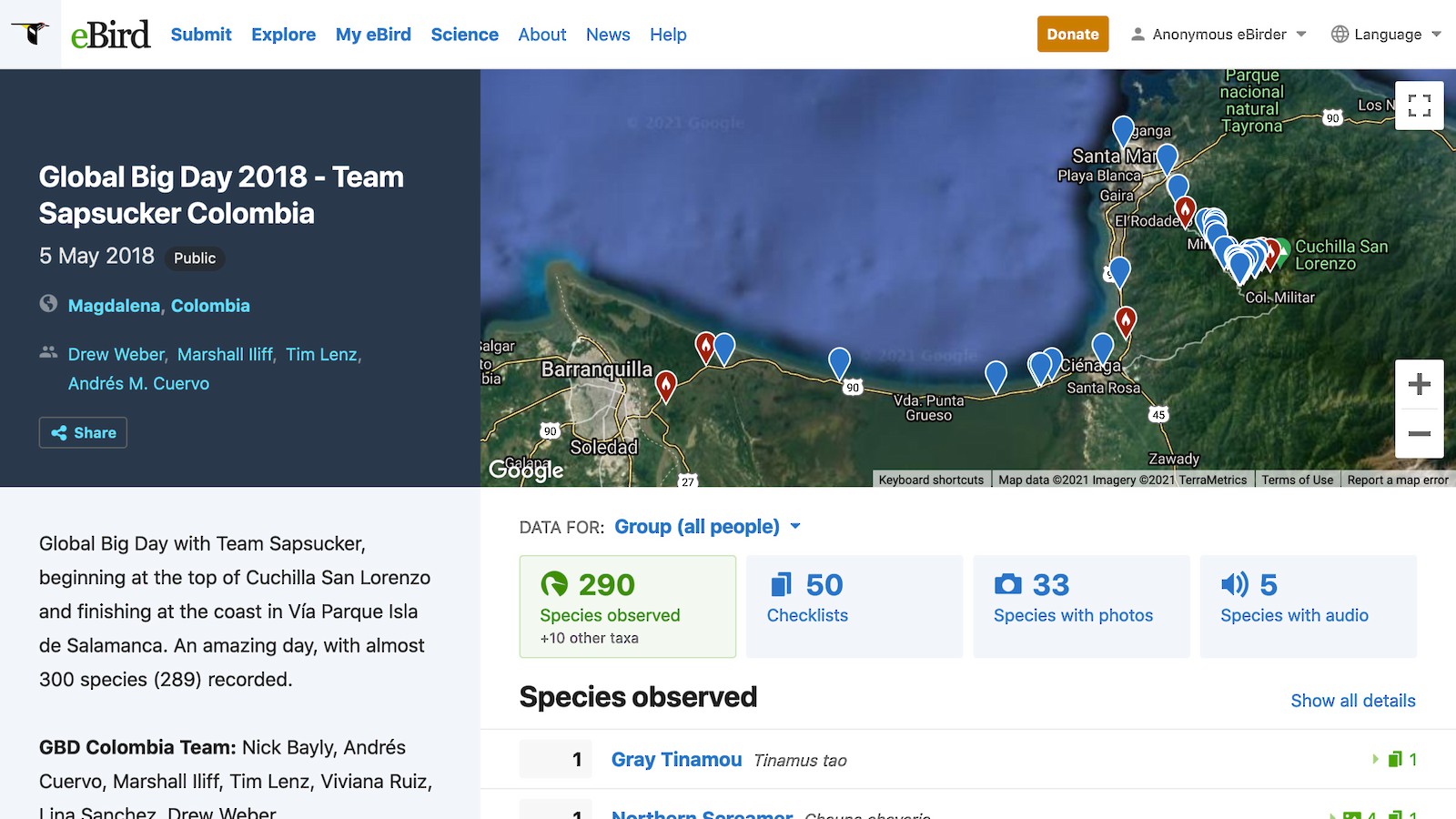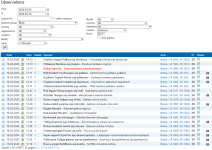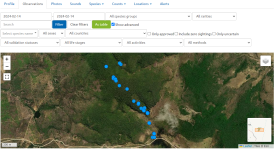You have relentlessly complained about eBird as if the folks who run it are obtuse dolts who don't understand birding and use a model that is simply "wrong," and you ask me to have respect? Please. (I know some of the folks at eBird central by the way--they include several of the most skilled birders in the world.)Really, please have some more respect for the audience—it's blindingly obvious that the place you see or hear the bird from isn't (exactly) the place where the bird is, and no-one has claimed it is !
In any event, I believe all my posts have been quite respectful. The point of emphasizing that the encounter location is not the bird location is that you and a few others have written as though tracking locations are the perfect data point and Opisska has said that recording encounter locations allows him to record "birds" rather than using those imprecise hotspots. So, you conclude, the eBird folks must be just obtuse not to allow encounter location tracking. But if you focus on the imprecision of the encounter locations, you can see that the advantages of encounter locations are not as great as you suggest--both methods require significant assumptions and approximations to be useful for analysis. It is just a matter of degree, and at that point it becomes a pragmatic analysis of the costs/benefits of each method regarding ease of use, privacy of data, etc. on which reasonable people can differ. It is not a matter of using a data model that is "wrong" or "right".
In any event, I think I'm done with this thread.













